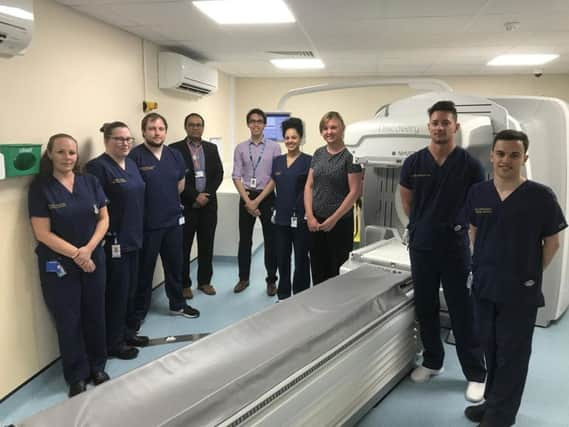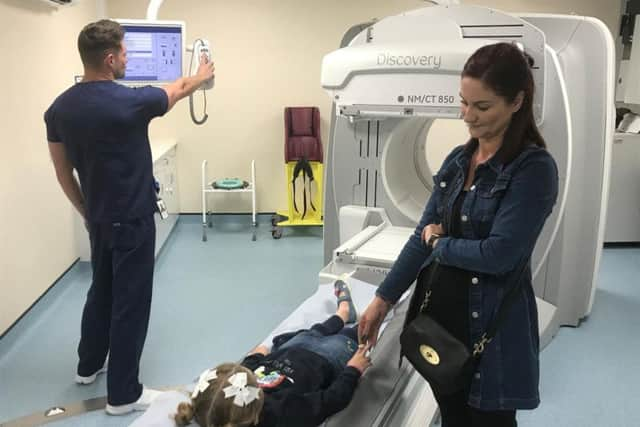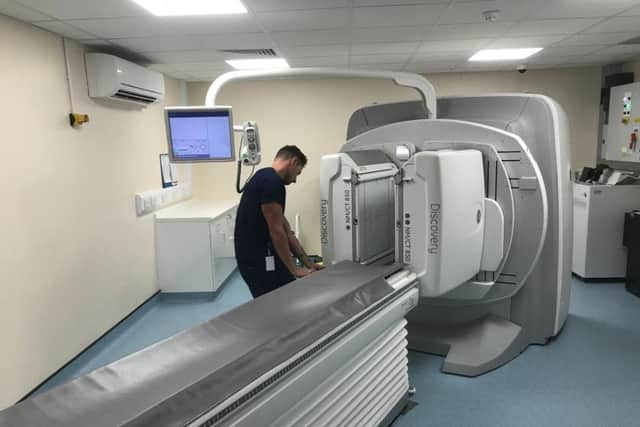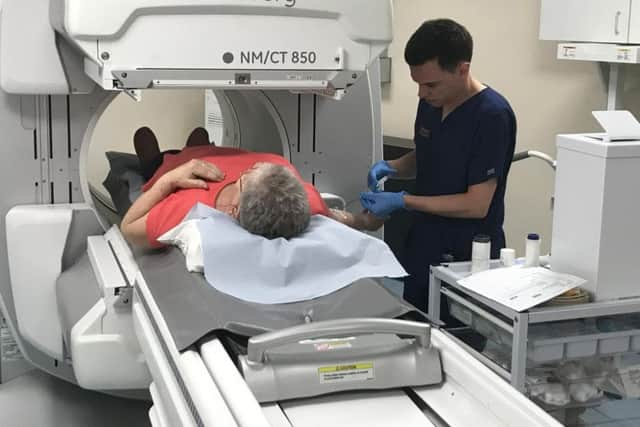Hartlepool's hospital becomes one of first in country to get new cutting-edge technology that can scan patients from head to toe


The GE Discovery 850 SPECT-CT combines two types of radiology images - functional molecular imaging with anatomical CT, to provide superior image quality and reduce the need for patients to attend for additional scans.
Patients of North Tees and Hartlepool NHS Foundation Trust were invited in for the first appointments on Tuesday, April 30, at 9am.


Advertisement
Hide AdAdvertisement
Hide AdThe first was six-year-old Millie Crone and her mum who joined her for the appointment. Millie was instantly put at ease by Clinical Technologist, Nicholas Henderson-Todd, who talked her through what the whole process would entail.
He explains: "It’s not just adults who need scans to tell us what is going on in their bodies, we see young patients quite regularly too.
"It’s important that myself and the team are able to make youngsters feel at ease as we don’t want them to become distressed. Millie’s mum will hold her hand throughout the appointment, and we explain what we are doing every step of the way."
Shortly after, 78-year-old Maureen Foster is welcomed into the scan room for her appointment. Clinical Technologist, Nélio Fernandes, invites her to take a seat and explains what the session will involve.


Advertisement
Hide AdAdvertisement
Hide AdOnce comfortable, Maureen is injected with a radioactive tracer that allows the scanner to take images of her kidneys. The team will then use these images to advise Maureen’s doctor on the next steps of her clinical care.
At the Hartlepool site of the Northern Medical Physics and Clinical Engineering Department, a team of committed Clinical Technologists, Medical Physicists and Consultant Radiologists ensure patients are helped through the process to ensure they receive the right care.
The department performs a wide range of scans to assess a large variety of conditions such as heart disease, cancer progression, kidney problems as well as helping to diagnose Alzheimer’s and Parkinsons’ disease.
The new technology means they now offer a full head to toe scanning service.


Advertisement
Hide AdAdvertisement
Hide AdKaren Whicker, Medical Physicist and Service Lead has been working on the project for some time, said: "This new scanner brings high quality imaging to people in Hartlepool and Stockton.
"The journey to this point has been a lengthy one, but we are proud to be able to deliver the very best level of patient care."